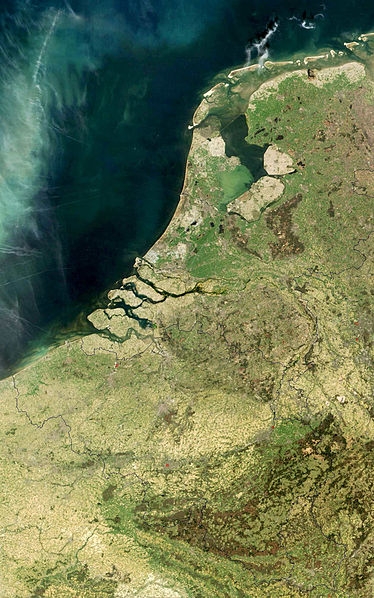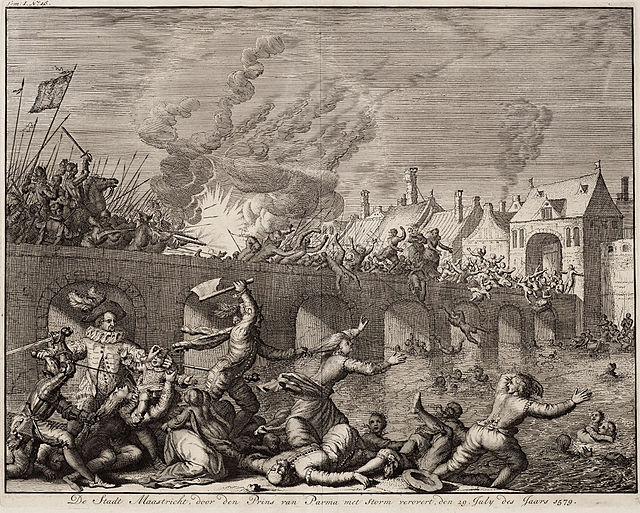The Duchy of Brabant, a state of the Holy Roman Empire, was established in 1183. It developed from the Landgraviate of Brabant of 1085–1183, and formed the heart of the historic Low Countries. The Duchy comprised part of the Burgundian Netherlands from 1430 and of the Habsburg Netherlands from 1482, until it was partitioned after the Dutch revolt of 1566–1648.
Brabantian Lion by Floris de Merode, Baron of Leefdael during the solemn Funeral of Albert VII, Archduke of Austria
The European region known as the Low Countries, historically also known as the Netherlands or Belgica, is a coastal lowland region in Northwestern Europe forming the lower basin of the Rhine–Meuse–Scheldt delta and consisting today of the three modern "Benelux" countries: Belgium, Luxembourg, and the Netherlands – which English and French give the same name as the traditional regional name. Geographically and historically, the area also includes parts of France and Germany such as French Flanders and the German regions of East Frisia and Cleves. During the Middle Ages, the Low Countries were divided into numerous semi-independent principalities.
The Low Countries as seen from space
Jan van Eyck, The Arnolfini Portrait, 1434, National Gallery, London
Sack of Maastricht by the Tercios de Flandes (Flemish Regiments) in 1579
Siege and capture of Tournai (1581)





